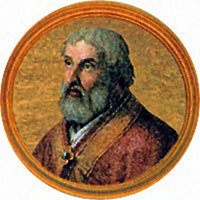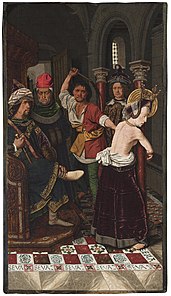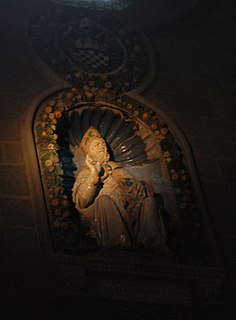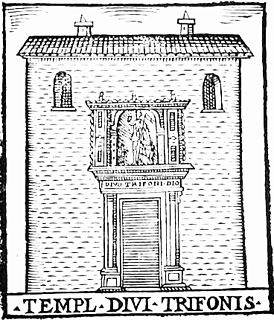Crescentius may refer to:
- The mediaeval writer on agriculture, Petrus de Crescentius, or Pietro de' Crescenzi
- Crescentius of Jesi or Crescentius Grizi of Jesi (died 1263), Italian Franciscan
- Crescentius Richard Duerr, President of De La Salle College in the Philippines

Pietro de' Crescenzi, Latin: 'Petrus de Crescentiis', was a Bolognese jurist, now remembered for his writings on horticulture and agriculture, the Ruralia commoda. There are many variant spellings of his name.
Crescentius of Jesi, O.F.M. of the Grizi family, was an Italian Friar Minor, who became Minister General of the Order of Friars Minor in 1244. He was an opponent of the Franciscan Spirituals, who insisted on an exact following of poverty according to the example of the founder of the Order, St. Francis of Assisi. He was deposed as Minister in 1247 in favour of John of Parma of their party.
Brother Crescentius Richard, F.S.C., was an American De La Salle Brother who was instrumental in the transformation of De La Salle University in the Philippines into a pillar of Philippine education. He was President of De La Salle University from 1961 to 1966 and was named its President Emeritus in 1981.
One of several leaders of the Roman aristocracy in the tenth century, during their opposition to the imperial and papal government of the time:

In historiography, ancient Rome is Roman civilization from the founding of the Italian city of Rome in the 8th century BC to the collapse of the Western Roman Empire in the 5th century AD, encompassing the Roman Kingdom, Roman Republic and Roman Empire until the fall of the western empire. The civilization began as an Italic settlement in the Italian Peninsula, conventionally founded in 753 BC, that grew into the city of Rome and which subsequently gave its name to the empire over which it ruled and to the widespread civilisation the empire developed. The Roman empire expanded to become one of the largest empires in the ancient world, though still ruled from the city, with an estimated 50 to 90 million inhabitants and covering 5.0 million square kilometres at its height in AD 117.

Crescentius the Elder was a politician and aristocrat in Rome who played a part in the papal appointment.

Crescentius the Younger, son of Crescentius the Elder, was a leader of the aristocracy of medieval Rome. During the minority of Holy Roman Emperor Otto III, he declared himself Consul of Rome and made himself de facto ruler of Rome. After being deposed, he led a rebellion, seized control of Rome, and appointed an antipope, but the rebellion failed and Crescentius was eventually executed.

John Crescentius also John II Crescentius or Crescentius III was the son of Crescentius the Younger. He succeeded to his father's title of consul and patrician of Rome in 1002 and held it to his death.
One of several saints:
- Crescentius of Rome, child saint (feast day: September 14)
- St. Crescentius, bishop of Mainz in the 2nd century AD
- St. Crescentius, deacon of Saint Zenobius
- St. Crescentius, companion of Saint Romulus of Fiesole
- Crescentius, one of a group of four martyrs killed in 326

Saint Crescentius of Rome is venerated as a child martyr by the Roman Catholic Church. According to tradition, he was born of a noble Roman family and was baptized along with his parents by Saint Epigmenius. During the persecutions of Christians by Diocletian, the family fled to Perugia, where his father Saint Euthymius died. Led back to Rome, Crescentius, who was eleven years old, was beheaded on the via Salaria, outside of the city walls.
Saints Helladius, Crescentius, Paul and Dioscorides or the Holy Martyrs Helladius, Crescentius, Paul and Dioscorides are a group of martyr saints in Christianity, killed in Rome in 326 and commemorated by the Orthodox Church on 28 May. They should not be confused with Crescentius of Rome, killed in 303.















